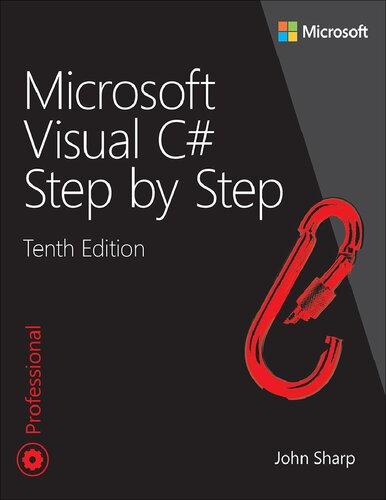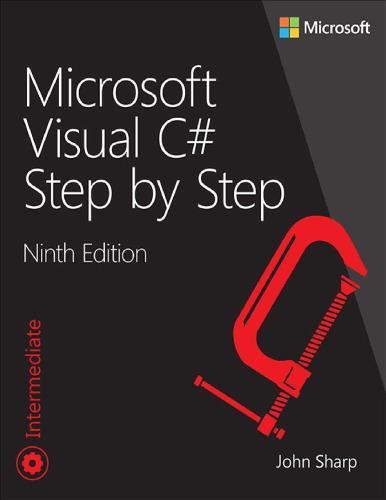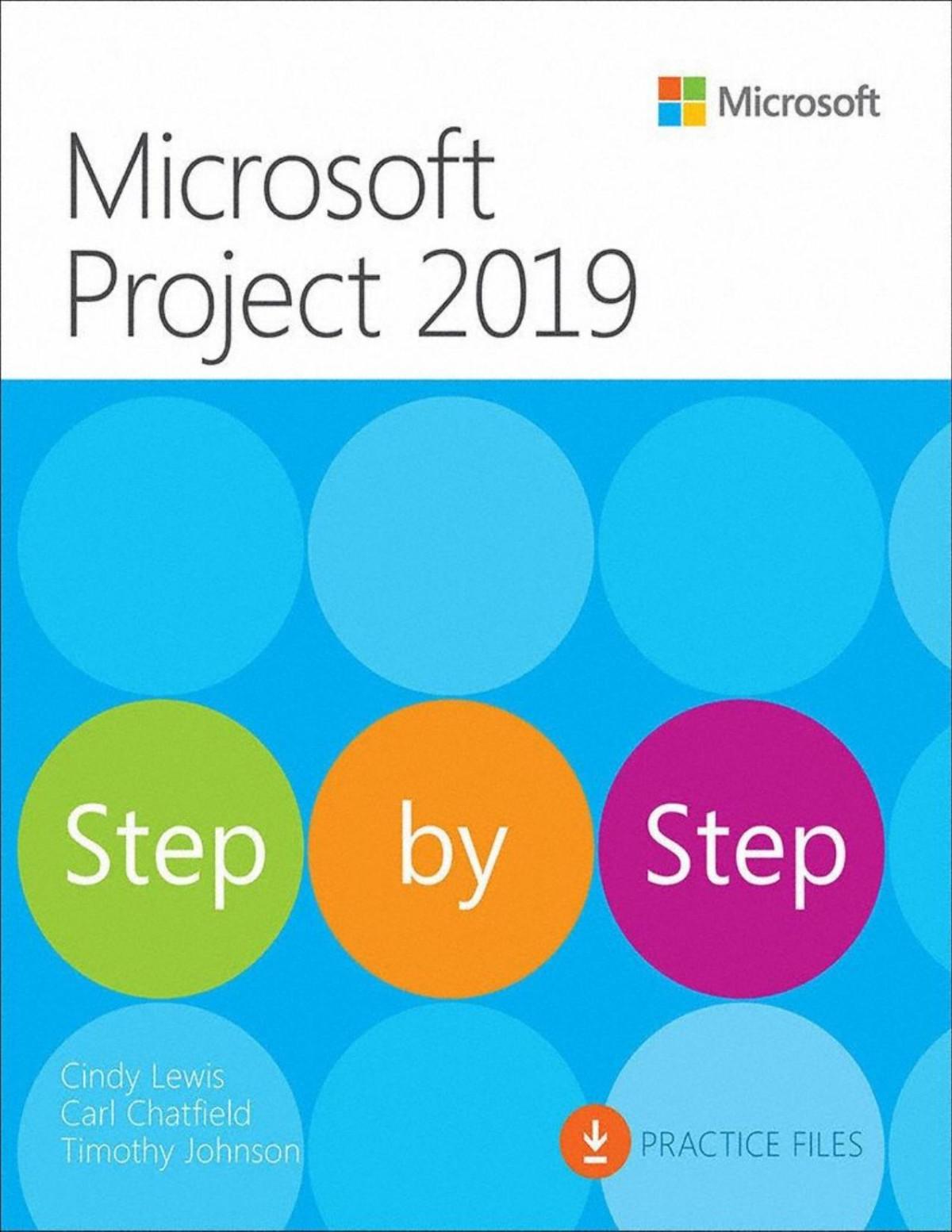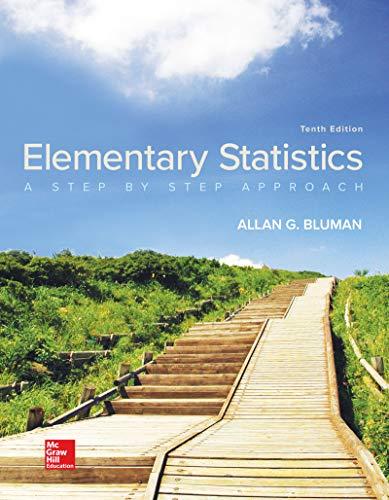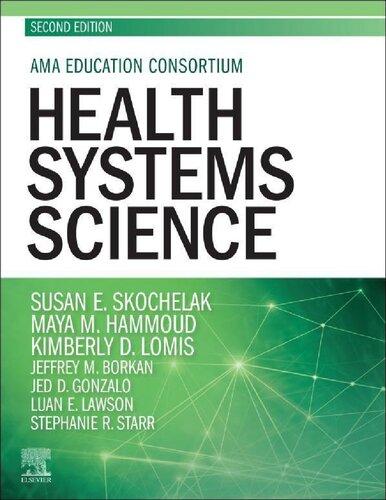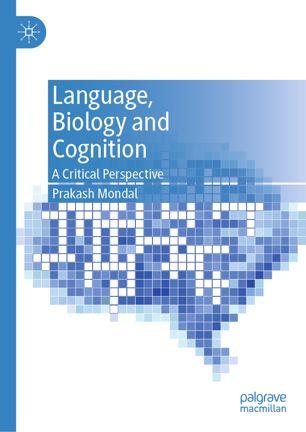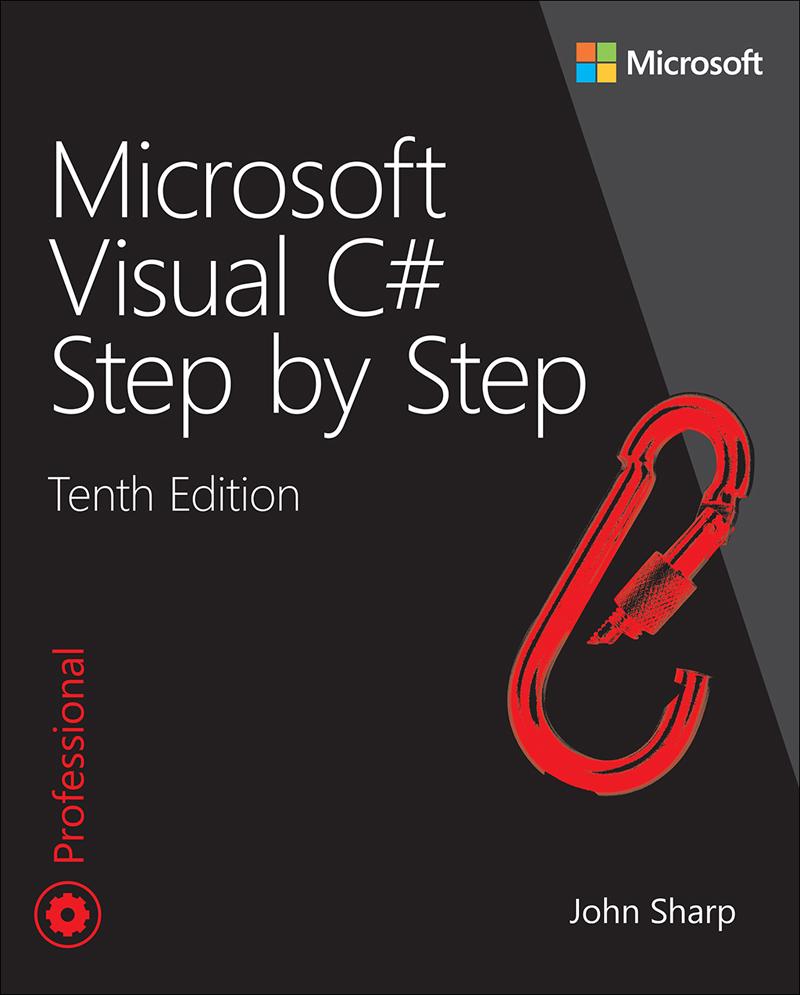A Cowboy State of Mind 1st Edition Jennie Marts
https://ebookmass.com/product/a-cowboy-state-of-mind-1st-editionjennie-marts/
ebookmass.com
John Sharp
MICROSOFT VISUAL C# STEP BY STEP, TENTH EDITION
Published with the authorization of Microsoft Corporation by: Pearson Education, Inc.
Copyright © 2022 by Agylia Group Ltd.
All rights reserved. This publication is protected by copyright, and permission must be obtained from the publisher prior to any prohibited reproduction, storage in a retrieval system, or transmission in any form or by any means, electronic, mechanical, photocopying, recording, or likewise. For information regarding permissions, request forms, and the appropriate contacts within the Pearson Education Global Rights & Permissions Department, please visit www.pearson.com/permissions.
No patent liability is assumed with respect to the use of the information contained herein. Although every precaution has been taken in the preparation of this book, the publisher and author assume no responsibility for errors or omissions. Nor is any liability assumed for damages resulting from the use of the information contained herein.
ISBN-13: 978-0-13-761983-2
ISBN-10: 0-13-761983-9
Library of Congress Control Number: 2022930224
ScoutAutomatedPrintCode
TRADEMARKS
Microsoft and the trademarks listed at http://www.microsoft.com on the “Trademarks” webpage are trademarks of the Microsoft group of companies. All other marks are property of their respective owners.
WARNING AND DISCLAIMER
Every effort has been made to make this book as complete and as accurate as possible, but no warranty or fitness is implied. The information provided is on an “as is” basis. The author, the publisher, and Microsoft Corporation
shall have neither liability nor responsibility to any person or entity with respect to any loss or damages arising from the information contained in this book or from the use of the programs accompanying it.
SPECIAL SALES
For information about buying this title in bulk quantities, or for special sales opportunities (which may include electronic versions; custom cover designs; and content particular to your business, training goals, marketing focus, or branding interests), please contact our corporate sales department at corpsales@pearsoned.com or (800) 382-3419.
For government sales inquiries, please contact governmentsales@pearsoned.com.
For questions about sales outside the U.S., please contact intlcs@pearson.com.
Editor-in-Chief: Brett Bartow
Executive Editor: Loretta Yates
Sponsoring Editor: Charvi Arora
Development Editor: Kate Shoup
Managing Editor: Sandra Schroeder
Senior Project Editor: Tracey Croom
Production Editor: Dan Foster
Copy Editor: Dan Foster
Indexer: Valerie Haynes Perry
Proofreader: Kim Wimpsett
Technical Editor: David Franson
Editorial Assistant: Cindy Teeters
Cover Designer: Twist Creative, Seattle
Compositor: Danielle Foster
Contents at a Glance
Acknowledgments
About the author
Introduction
PART I INTRODUCING MICROSOFT VISUAL C# AND MICROSOFT VISUAL STUDIO 2022
CHAPTER 1 Welcome to C#
CHAPTER 2 Working with variables, operators, and expressions
CHAPTER 3 Writing methods and applying scope
CHAPTER 4 Using decision statements
CHAPTER 5 Using compound assignment and iteration statements
CHAPTER 6 Managing errors and exceptions
PART II UNDERSTANDING THE C# OBJECT MODEL
CHAPTER 7 Creating and managing classes and objects
CHAPTER 8 Understanding values and references
CHAPTER 9 Creating value types with enumerations and structures
CHAPTER 10 Using arrays
CHAPTER 11 Understanding parameter arrays
CHAPTER 12 Working with inheritance
CHAPTER 13 Creating interfaces and defining abstract classes
CHAPTER 14 Using garbage collection and resource management
PART III UNDERSTANDING THE C# OBJECT MODEL
CHAPTER 15 Implementing properties to access fields
CHAPTER 16 Handling binary data and using indexers
CHAPTER 17 Introducing generics
CHAPTER 18 Using collections
CHAPTER 19 Enumerating collections
CHAPTER 20 Decoupling application logic and handling events
CHAPTER 21 Querying in-memory data by using query expressions
CHAPTER 22 Operator overloading
PART IV BUILDING UNIVERSAL WINDOWS PLATFORM APPLICATIONS WITH C#
CHAPTER 23 Improving throughput by using tasks
CHAPTER 24 Improving response time by performing asynchronous operations
CHAPTER 25 Implementing the user interface for a Universal Windows Platform app
CHAPTER 26 Displaying and searching for data in a Universal Windows Platform app
CHAPTER 27 Accessing a remote database from a Universal Windows Platform app Index
Contents Acknowledgments
About the author
Introduction
PART I INTRODUCING MICROSOFT VISUAL C# AND MICROSOFT VISUAL STUDIO 2022
Chapter 1 Welcome to C#
Writing your first C# program
Beginning programming with the Visual Studio 2022 environment
Writing your first program using Visual Studio 2022
Using namespaces
Namespaces and assemblies
Commenting code
Creating a graphical application
Examining the Universal Windows Platform app
Adding code to the graphical application
Summary
Quick Reference
Chapter 2 Working with variables, operators, and expressions
Understanding statements
Using identifiers
Identifying keywords
Using variables
Naming variables
Declaring variables
Specifying numeric values
Working with primitive data types
Unassigned local variables
Displaying primitive data type values
Using arithmetic operators
Operators and types
Examining arithmetic operators
Controlling precedence
Using associativity to evaluate expressions
Associativity and the assignment operator
Incrementing and decrementing variables
Prefix and postfix
Declaring implicitly typed local variables
Summary
Quick Reference
Chapter 3 Writing methods and applying scope
Creating methods
Declaring a method
Returning data from a method
Using expression-bodied methods
Calling methods
Specifying the method call syntax
Returning multiple values from a method
Applying scope
Defining local scope
Defining class scope
Overloading methods
Writing methods
Using the Visual Studio Debugger to step through methods
Refactoring code
Nesting methods
Using optional parameters and named arguments
Defining optional parameters
Passing named arguments
Resolving ambiguities with optional parameters and named arguments
Summary
Quick reference
Chapter 4 Using decision statements
Declaring Boolean variables
Using Boolean operators
Understanding equality and relational operators
Understanding conditional logical operators
Short-circuiting
Summarizing operator precedence and associativity
Pattern matching
Using if statements to make decisions
Understanding if statement syntax
Using blocks to group statements
Cascading if statements
Using switch statements
Understanding switch statement syntax
Following the switch statement rules
Using switch expressions with pattern matching
Summary
Quick reference
Chapter 5 Using compound assignment and iteration statements
Using compound assignment operators
Writing while statements
Writing for statements
Writing do statements
Summary
Quick reference
Chapter 6 Managing errors and exceptions
Trying code and catching exceptions
Unhandled exceptions
Using multiple catch handlers
Catching multiple exceptions
Filtering exceptions
Propagating exceptions
Using checked and unchecked integer arithmetic
Writing checked statements
Writing checked expressions
Throwing exceptions
Using throw expressions
Using a finally block
Summary
Quick reference
PART II UNDERSTANDING THE C# OBJECT MODEL
Chapter 7 Creating and managing classes and objects
Understanding classification
The purpose of encapsulation
Defining and using a class
Controlling accessibility
Working with constructors
Overloading constructors
Deconstructing an object
Understanding static methods and data
Creating a shared field
Creating a static field by using the const keyword
Understanding static classes
Static using statements
Anonymous classes
Summary
Quick reference
Chapter 8 Understanding values and references
Copying value type variables and classes
Understanding null values and nullable types
The null-conditional and null-coalescing operators
Using nullable types
Understanding the properties of nullable types
Using ref and out parameters
Creating ref parameters
Creating out parameters
How computer memory is organized
Using the stack and the heap
The System.Object class
Boxing
Unboxing
Casting data safely
The is operator
The as operator
The switch statement revisited
Summary
Quick reference
Chapter 9 Creating value types with enumerations and structures
Working with enumerations
Declaring an enumeration
Using an enumeration
Choosing enumeration literal values
Choosing an enumeration’s underlying type
Working with structures
Declaring a structure
Understanding differences between structures and classes
Declaring structure variables
Understanding structure initialization
Copying structure variables
Summary
Quick reference
Chapter 10 Using arrays
Declaring array variables
Creating an array instance
Populating and using an array
Creating an implicitly typed array
Accessing an individual array element
Accessing a series of array elements
Iterating through an array
Passing arrays as parameters or return values for a method
Copying arrays
Using multidimensional arrays
Creating jagged arrays
Accessing arrays that contain value types
Summary
Quick reference
Chapter 11 Understanding parameter arrays
Overloading: a recap
Using array arguments
Declaring a params array
Using params object[ ]
Using a params array
Comparing parameter arrays and optional parameters
Summary
Quick reference
Chapter 12 Working with inheritance
What is inheritance?
Using inheritance
The System.Object class revisited
Calling base-class constructors
Assigning classes
Declaring new methods
Declaring virtual methods
Declaring override methods
Understanding protected access
Creating extension methods
Summary
Quick reference
Chapter 13 Creating interfaces and defining abstract classes
Understanding interfaces
Defining an interface
Implementing an interface
Referencing a class through its interface
Working with multiple interfaces
Explicitly implementing an interface
Handling versioning with interfaces
Interface restrictions
Defining and using interfaces
Abstract classes
Abstract methods
Sealed classes
Sealed methods
Implementing and using an abstract class
Summary
Quick reference
Chapter 14 Using garbage collection and resource management
The life and times of an object
Writing finalizers
Why use the garbage collector?
How does the garbage collector work?
Recommendations
Resource management
Disposal methods
Exception-safe disposal
The using statement and the IDisposable interface
Calling the Dispose method from a finalizer
Implementing exception-safe disposal
Handling asynchronous disposal
Summary
Quick reference
PART III UNDERSTANDING THE C# OBJECT MODEL
Chapter 15 Implementing properties to access fields
Implementing encapsulation by using methods
What are properties?
Using properties
Read-only properties
Write-only properties
Property accessibility
Understanding property restrictions
Declaring interface properties
Replacing methods with properties
Pattern-matching with properties
Generating automatic properties
Initializing objects by using properties
Automatic properties and immutability
Using records with properties to implement lightweight structures
Summary
Quick reference
Chapter 16 Handling binary data and using indexers
What is an indexer?
Storing binary values
Displaying binary values
Manipulating binary values
Solving the same problems using indexers
Understanding indexer accessors
Comparing indexers and arrays
Indexers in interfaces
Using indexers in a Windows application
Summary
Quick reference
Chapter 17 Introducing generics
The problem: Issues with the object type
The generics solution
Generics vs. generalized classes
Generics and constraints
Creating a generic class
The theory of binary trees
Building a binary tree class by using generics
Creating a generic method
Defining a generic method to build a binary tree
Variance and generic interfaces
Covariant interfaces
Contravariant interfaces
Summary
Quick reference
Chapter 18 Using collections
What are collection classes?
The List<T> collection class
The LinkedList<T> collection class
The Queue<T> collection class
The PriorityQueue<TElement, TPriority> collection class
The Stack<T> collection class
The Dictionary<TKey, TValue> collection class
The SortedList<TKey, TValue> collection class
The HashSet<T> collection class
Using collection initializers
Find methods, predicates, and lambda expressions
The forms of lambda expressions
Lambda expressions and anonymous methods
Comparing arrays and collections
Summary
Quick reference
Chapter 19 Enumerating collections
Enumerating the elements in a collection
Manually implementing an enumerator
Implementing the IEnumerable interface
Implementing an enumerator by using an iterator
A simple iterator
Defining an enumerator for the Tree<TItem> class by using an iterator
Summary
Quick reference
Chapter 20 Decoupling application logic and handling events
Understanding delegates
Examples of delegates in the .NET class library
The automated factory scenario
Declaring and using delegates
Lambda expressions and delegates
Enabling notifications by using events
Declaring an event
Subscribing to an event
Unsubscribing from an event
Raising an event
Understanding user-interface events
Using events
Summary
Quick reference
Chapter 21 Querying in-memory data by using query expressions
What is LINQ?
Using LINQ in a C# application
Selecting data
Filtering data
Ordering, grouping, and aggregating data
Joining data
Using query operators
Querying data in Tree<TItem> objects
LINQ and deferred evaluation
Summary
Quick reference
Chapter 22 Operator overloading
Understanding operators
Operator constraints
Overloaded operators
Creating symmetric operators
Understanding compound assignment evaluation
Declaring increment and decrement operators
Comparing operators in structures and classes
Defining operator pairs
Implementing operators
Overriding the equality operators
Understanding conversion operators
Providing built-in conversions
Implementing user-defined conversion operators
Creating symmetric operators, revisited
Writing conversion operators
Summary
Quick reference
PART IV BUILDING UNIVERSAL WINDOWS
PLATFORM APPLICATIONS WITH C#
Chapter 23 Improving throughput by using tasks
Why perform multitasking by using parallel processing?
The rise of the multicore processor
Implementing multitasking by using Microsoft .NET
Tasks, threads, and the ThreadPool
Creating, running, and controlling tasks
Using the Task class to implement parallelism
Abstracting tasks by using the Parallel class
When not to use the Parallel class
Canceling tasks and handling exceptions
The mechanics of cooperative cancellation
Handling task exceptions by using the AggregateException class
Using continuations with canceled and faulted tasks
Summary
Quick reference
Chapter 24 Improving response time by performing asynchronous operations
Implementing asynchronous methods
Defining asynchronous methods: the problem
Defining asynchronous methods: the solution
Defining asynchronous methods that return values
Asynchronous method pitfalls
Asynchronous methods and the Windows Runtime APIs
Tasks, memory allocation, and efficiency
Using PLINQ to parallelize declarative data access
Using PLINQ to improve performance while iterating through a collection
Canceling a PLINQ query
Synchronizing concurrent access to data
Locking data
Synchronization primitives for coordinating tasks
Canceling synchronization
The concurrent collection classes
Using a concurrent collection and a lock to implement thread-safe data access
Summary
Quick reference
Chapter 25 Implementing the user interface for a Universal Windows Platform app
Features of a Universal Windows Platform app
Using the Blank App template to build a Universal Windows Platform app
Implementing a scalable user interface
Implementing a tabular layout by using a Grid control
Adapting the layout by using the Visual State Manager
Applying styles to a UI
Summary
Quick reference
Chapter 26 Displaying and searching for data in a Universal Windows Platform app
Implementing the Model-View-ViewModel pattern
Displaying data by using data binding
Modifying data by using data binding
Using data binding with a ComboBox control
Creating a ViewModel
Adding commands to a ViewModel
Summary
Quick reference
Chapter 27 Accessing a remote database from a Universal Windows Platform app
Retrieving data from a database
Creating an entity model
Creating and using a REST web service
Updating the UWP application to use the web service
Searching for data in the Customers app
Inserting, updating, and deleting data through a REST web service
Summary
Quick reference
Index

